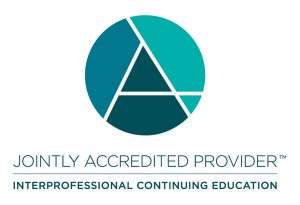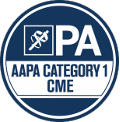Target Audience
This activity is intended for Dermatologists, Dermatology Residents/Fellows, Physician Assistants, Nurse Practitioners, Nurses, and other health professionals interested in treating patients with dermatologic diseases.
Educational Objectives
As a result of participating in this live activity, participants should be better able to:
- Cite common aesthetic, cultural and ethnic practices that may increase occurrence of common skin conditions.
- Differentiate skin color classification systems to categorize common skin disorders and cutaneous diseases in patients with skin of color.
- Evaluate key differences in the skin structure and how it relates to diagnosing and treating common ethnic skin disorders including acne, rosacea, atopic dermatitis, psoriasis, pigmentary disorders, multisystem inflammatory diseases, dermatologic manifestations of autoimmune disorders, hidradenitis suppurativa, seborrheic dermatitis, alopecia, nail diseases and skin cancer.
- Identify clinical and diagnostic tools and devices utilized in the diagnosis and management of skin disorders or aesthetic procedures for patients with skin of color.
- Identify dermatologic manifestations of common sexually transmitted infections, including diagnostic and treatment approaches, in patients with SOC.
- Evaluate and manage patients with SOC who manifest with drug-induced skin rashes.
- Formulate medical and minimally invasive treatment plans that may be more effective when treating skin, hair, and nail disorders common to patients with skin of color.
- Identify and prevent dermatologic surgical and cosmetic complications in patients with skin of color.
- Review diagnostic strategies for identifying skin pathologies in non-white skin tones for the earlier recognition of cutaneous malignancies in skin of color.
- Recognize the unique structural nuances of ethnic facial anatomy and impact on the natural aging process.
- Identify the efficacy and safety of laser and energy-based device use in patients with higher skin phototypes, with fewer risks of epidermal adverse events.
- Describe strategies for the use of neurotoxins and soft tissue fillers for volumization and rejuvenation of the ethnic ace including specific anatomical considerations and approaches for the lips, nasolabial folds, and chin.
- Identify the similarities and differences in diagnostic and management approaches to dermatologic conditions in pediatric versus adult populations with SOC.
Joint Accreditation Statement

In support of improving patient care, this activity has been planned and implemented by the Postgraduate Institute for Medicine and National Medical Education Corporation. Postgraduate Institute for Medicine is jointly accredited by the Accreditation Council for Continuing Medical Education (ACCME), the Accreditation Council for Pharmacy Education (ACPE), and the American Nurses Credentialing Center (ANCC), to provide continuing education for the healthcare team.
Credit Designation
Physician Continuing Medical Education
The Postgraduate Institute for Medicine designates this live activity for a maximum of 18.25 AMA PRA Category 1 Credit(s)™. Physicians should claim only the credit commensurate with the extent of their participation in the activity.
Continuing Nursing Education
The maximum number of hours awarded for this Continuing Nursing Education activity is 18.25 contact hours. Pharmacotherapy contact hours for Advanced Practice Registered Nurses will be designated on certificates.
Continuing Physician Assistant Education

Postgraduate Institute for Medicine has been authorized by the American Academy of PAs (AAPA) to award AAPA Category 1 CME credit for activities planned in accordance with AAPA CME Criteria. This activity is designated for 18.25 AAPA Category 1 CME credits. PAs should only claim credit commensurate with the extent of their participation.
Credit amount subject to change
Disclosure of Conflicts of Interest
Postgraduate Institute for Medicine (PIM) requires faculty, planners, and others in control of educational content to disclose all their financial relationships with ineligible companies. All identified conflicts of interest (COI) are thoroughly vetted and mitigated according to PIM policy. The existence or absence of COI for everyone in a position to control educational content will be disclosed to participants prior to the start of each activity.
